How To Scald Milk
Want to make light and fluffy bread, cakes, and other baked goods? Learn how to scald milk and add this magic ingredient to all your favorite recipes! This post gives you two ways to scald milk, plus helpful tips and tricks.
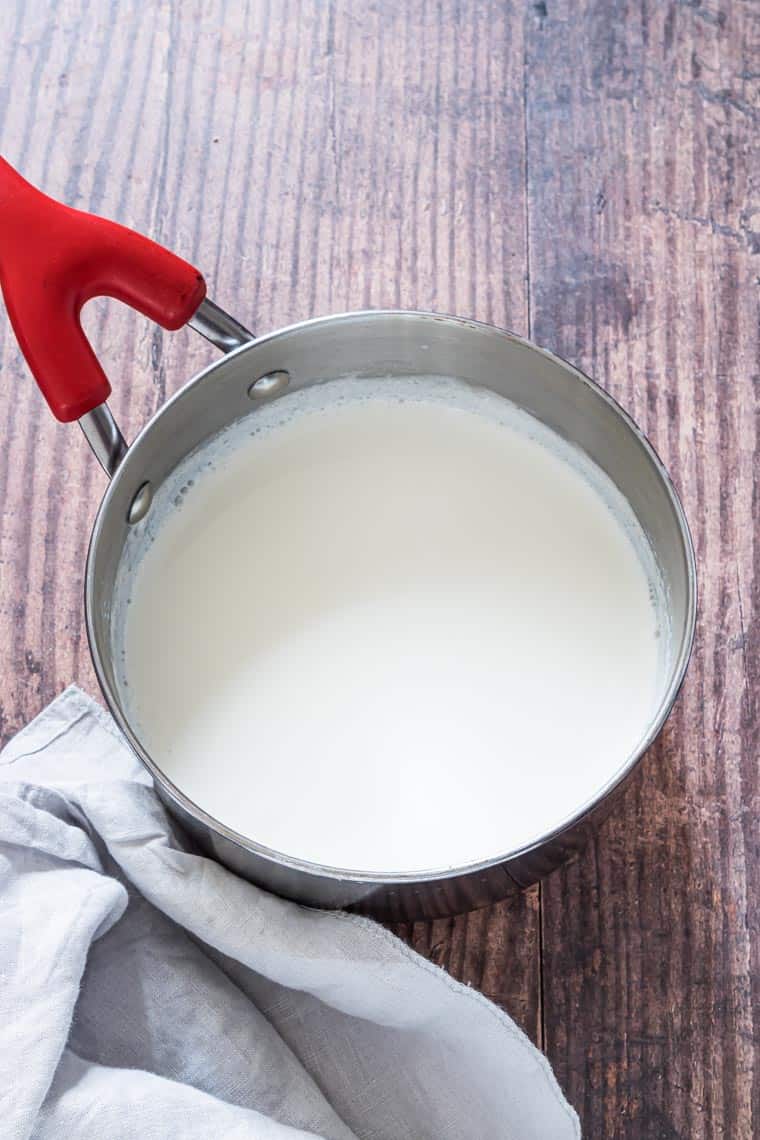
Love making melt in your mouth dinner rolls, light and fluffy cakes, or really creamy awesome yogurt? Then you need to learn how to scald milk.
Scalding milk is a tried and true kitchen technique with many uses, such as proofing dough, melting fats, and preventing curdling. And you will be excited to know that learning how to make scalded milk is really quite easy and #totallyworthit.
For even more kitchen how-to’s, check out these helpful posts that will show you How To Bread Chicken, How To Make Buttermilk, How To Cook A Whole Chicken in an Air Fryer, How To Create A Fruit Platter, and How To Cut A Watermelon.
What Is Scalded Milk?
Scalding milk is simply a process in which the proteins in milk are killed off so that gluten is not broken, thereby allowing things like batter, cakes, dough, etc. to rise properly so we end up with light and fluffy baked goods and treats.
Those delectable fluffy dinner rolls that grandma used to make? Yeap, they are made with scalded milk.
Related Link : How To Make Buttermilk.
It is really easy to learn how to scald milk on either the stovetop or using your microwave, and this post shows you both ways. Feel free to make it ahead of time and store it till needed.
It is super important to make sure the milk cools to the required temperature of the recipe you are using it for, as hot milk might affect things, like killing off yeast, etc.
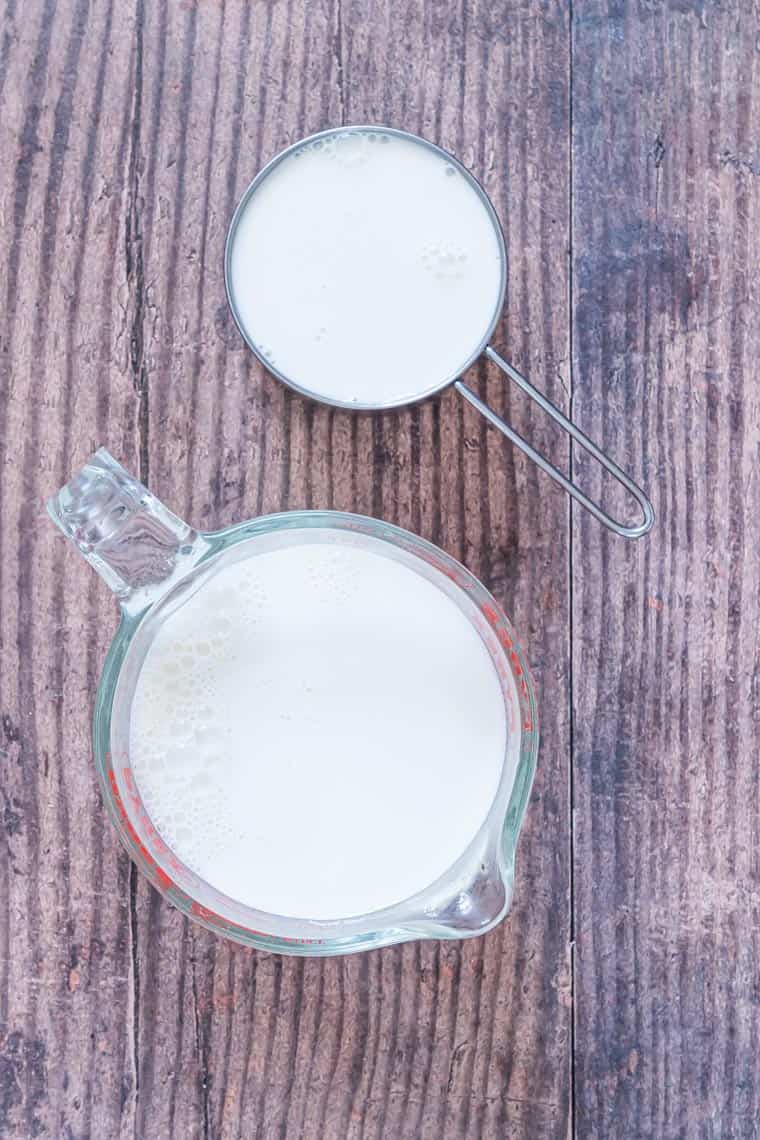
Tools needed
KITCHEN TOOLS, UTENSILS & APPLIANCES NEEDED
This post contains affiliate links. For more information, check out my disclosure.
Here are some of the items you will need when working in the kitchen.- These awesome measuring jugs or cups.
- Measuring teaspoons.
- Sea Salt Flakes <= amazing salt that makes your food taste good.
Why Scald Milk
You often see the term scalded milk in older recipes and cookbooks. It was necessary to do this in order to kill off bad bacteria since milk was not pasteurized.
However, nowadays, milk is pasteurized, so scalding milk is done for other reasons, like:
- Proofing Dough – Kills off the whey proteins (milk proteins) that can interfere with gluten working properly, plus starting with a warmer liquid can help the dough rise faster and cut down on cooking time.
- Making Yogurt And Cheese – To help evaporate some of the thinner water content as well as kill off bacteria that may interfere with the yogurt-making or cheesemaking process.
- Flavor and Color Boost – Scalded milk is a great carrier of flavors, especially in baked goods. You can add spices and flavorings like cinnamon bark, orange zest, hibiscus (lovely red coloring, too), and vanilla beans so that flavor is transferred across to your baking recipes and treats when you add the warm milk. It is used for making ice cream recipes.
- Coffee – Become an at-home barista and add scalded milk to your coffee and create an awesome cafe au lait.
What Is The Temperature Of Scalded Milk
To make scalded milk, you are aiming to heat the milk to 180 degrees F / 82 degrees C. That is the desired temperature. Please avoid heating the milk to 212 degrees F / 100 degrees C.
When heating milk, if it reaches 212 degrees F / 100 degrees C, you need to discard it and start again. Use a candy thermometer to check the temperature while you warm milk.
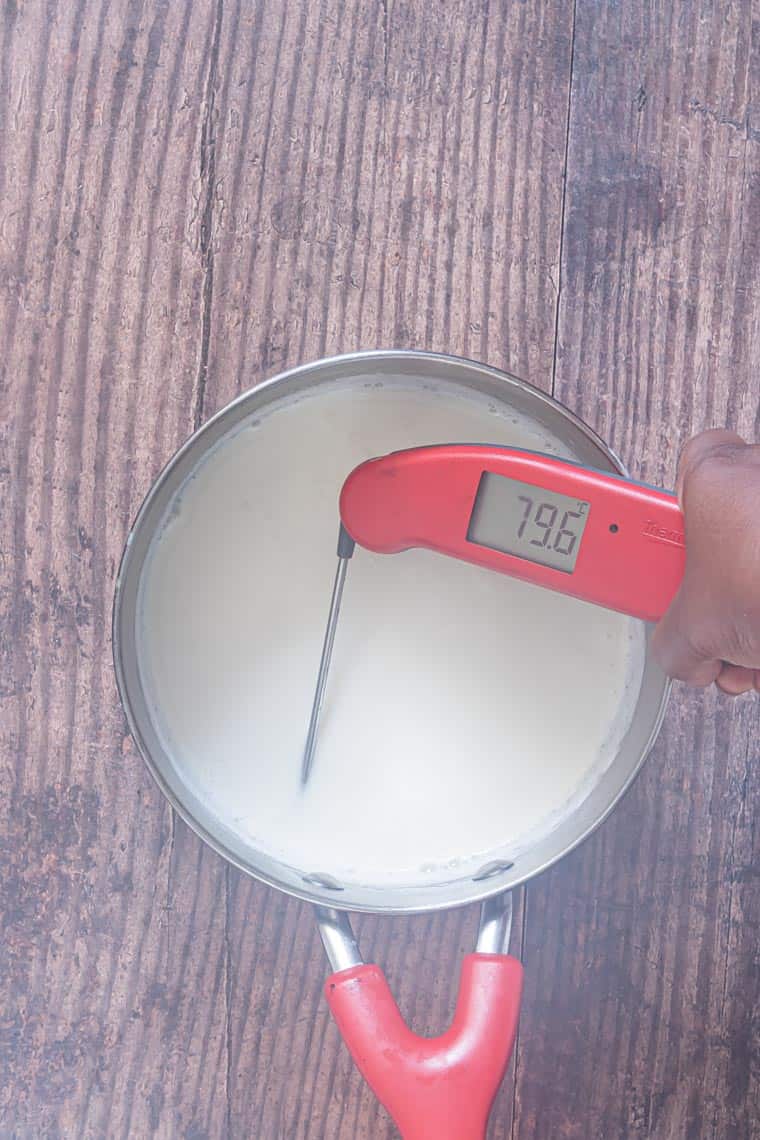
Ready to learn how to scald milk, and take your baking to the next level? Then let’s gather up the ingredients and I will show you how…
How To Scald Milk On Stove Top
Making scalded milk on the stovetop is super easy. And this is the method I normally use when doing this.
- Put the cold milk in a heavy-bottomed saucepan over medium heat.
- Stir the milk regularly with a wooden spoon or silicone spatula.
- Using a thermometer, test the temperature in the middle of the milk (make sure it is not touching the bottom of the pan).
- The milk is ready when it reaches 180 degrees F / 82 degrees C.
- Remove from heat and allow the scalded milk to cool to the temperature you need and use.
- Scalding should take about 4-5 minutes.
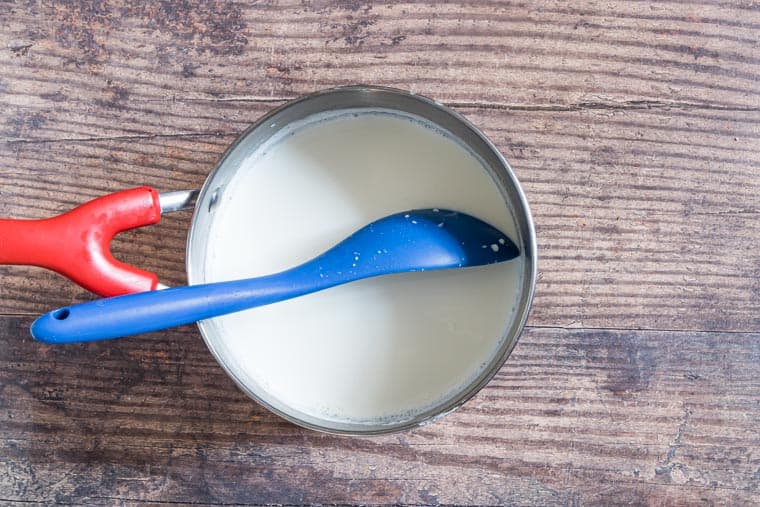
How To Scald Milk In The Microwave
You have a little bit less control when making scalded milk in the microwave, but it is pretty easy to do too.
- Put the cold milk in a deep microwave-safe container.
- Microwave the milk for 30 seconds at a time on medium heat/high heat, stirring in between each go. It may take 3 or so minutes to get there.
- Using a thermometer, test the temperature in the middle of the milk, making sure it is not touching the bowl. Milk heated to 180 degrees F / 82 degrees C is considered to be scalded.
- Remove from the microwave and allow the scalded milk to cool to the temperature you need, and then use.
- Scalding should take about 3-4 minutes.
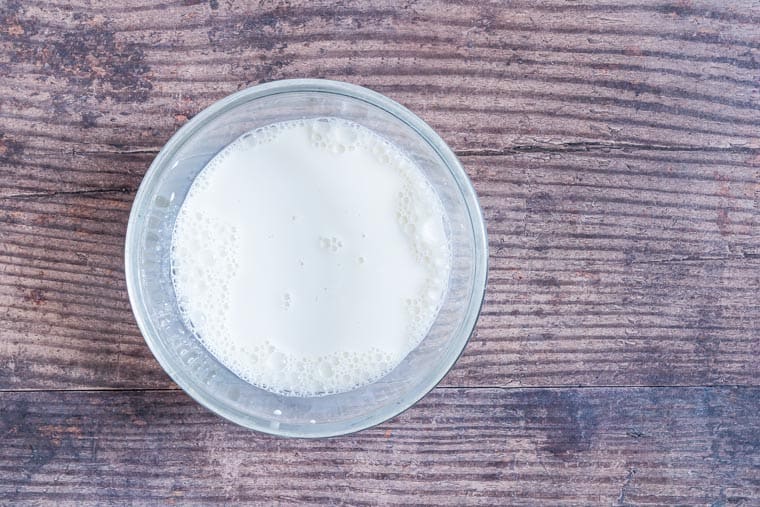
Scalded Milk Tips
- Use deep pans or deep mixing bowls when heating milk in case it boils over or in case you shake it when moving to test the temperature.
- Stir frequently so that the milk heats up evenly.
- Use a wooden spoon or silicone spoon to stir as metal can react with the milk.
- Make sure the thermometer is touching only the milk and not the sides of the bowl or saucepan when reading to make sure you get an accurate temperature.
- Remove the bowl from the microwave carefully, using oven mitts to avoid burning your hands.
Avoid Burnt Scalded Milk
- Make sure you scald milk on medium-high heat.
- Make sure to always stay next to the milk when scalding as it can increase in temperature very fast.
- Make sure to use a heavy-bottom pan when doing this.
Related Link: How To Bread Chicken.
FAQs
Follow the recipe you are making and use the type of dairy milk it calls for.
Normally, when scalding milk, you will be using whole milk. So if the recipe just says scald milk, then use whole milk. You can use powdered milk since it is a dehydrated form of dairy milk and has the same proteins. You can also use skimmed milk but remember this has less fat than whole milk.
I do not recommend scalding dairy-free milk, such as almond milk or soy milk. While you can heat them to the proper temperature, plant-based milk like oat milk and almond milk do not have the same proteins as dairy milk, and will not achieve the desired results when it comes to proofing dough.
You will lose some milk to evaporation when you are making scalded milk. I suggest you add a little more milk (perhaps a quarter of a cup) than necessary before heating it up.
When cooled down, measure out exactly how much milk you need so that you get the amount right.
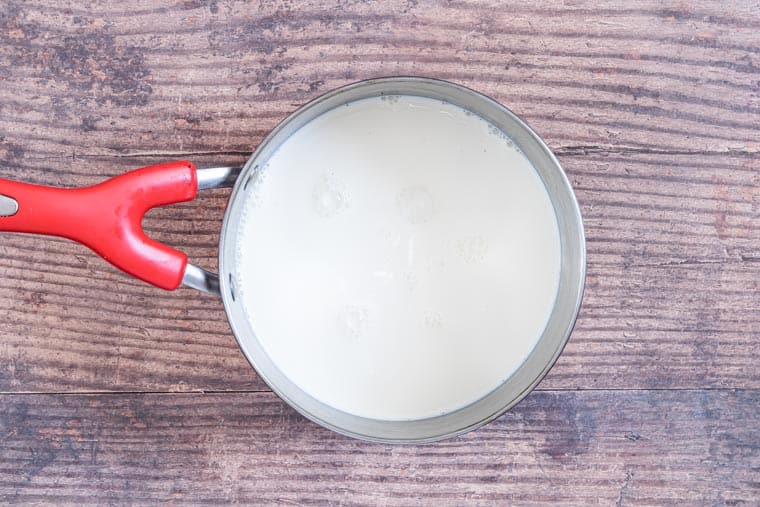
More Kitchen Tips Posts
- How Many Tablespoons In a Cup.
- How Many Teaspoons In a Tablespoon.
- How To Make Roasted Almonds.
- How To Make Roast Cashews.
- How To Make The Perfect Hard Boiled Eggs In the Instant Pot.
- How To Bread Chicken.
- How To Make Buttermilk.
- How To Cook Artichokes.
Weight Watchers Points
There are 8 Blue Plan SmartPoints in one serving of this.
Thank you for reading my How to Scalk Milk on the Stove post. And please come visit again as I continue to slice, dice and dream up affordable Air Fryer recipes, Instant Pot Recipes, Southern Recipes and more. Thanks for supporting Recipes from a Pantry, food blog.
Get The Instructions:
Don’t forget to tag #recipesfromapantry on Instagram or Twitter if you try How To Scald Milk! It is really, really awesome for me when you make one of my recipes and I’d love to see it. You can also share it on my Facebook page. Please pin this recipe to Pinterest too! Thank you for reading Recipes from a Pantry.
How To Scald Milk
Ingredients
- 1 cup (250ml) Whole Milk or use the amount your recipe calls for and a bit extra
Instructions
How To Scald Milk On Stove Top
- Put the cold milk in heavy-bottomed saucepan over medium heat. Stir regularly with wooden spoon/ silicone spatula.
- Use a thermometer and test the temperature in the middle of the milk and make sure it is not touching the saucepan.
- The milk is ready when it reaches 180 degrees F / 82 degrees C.
- Remove from heat and allow the scalded milk to cool to the temperature you need and use. Scalding should take about 4-5 minutes.
How To Scald Milk In The Microwave
- Put the cold milk in a deep microwave-safe glass bowl.
- Microwave the milk for 30 seconds at a time on medium-high stirring in between each go. It may take 3 or so minutes to get there.
- Using a thermometer test the temperature in the middle of the milk (make sure the thermometer is not touching the bowl).
- The milk is ready when it reaches 180 degrees F / 82 degrees C.
- Remove from microwave and allow the scalded milk to cool to the temperature you need and use. Scalding should take about 3-4 minutes.
Video
Notes
- Use deep pans or deep mixing bowls when heating milk in case it boils over or in case you shake it when moving to test the temperature.
- Stir frequently so that the milk heats up evenly.
- Use a wooden spoon or silicone spoon to stir as metal can react with the milk.
- Make sure the thermometer is touching only the milk and not the sides of the bowl or saucepan when reading to make sure you get an accurate temperature.
- Remove the bowl from the microwave carefully, using oven mitts to avoid burning your hands.
- There are 8 WW Blue Plan Points in one serving of this.

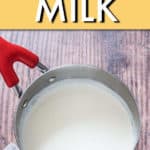
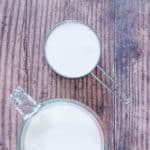
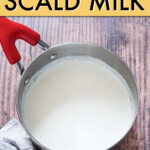
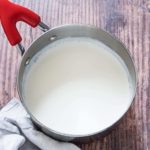
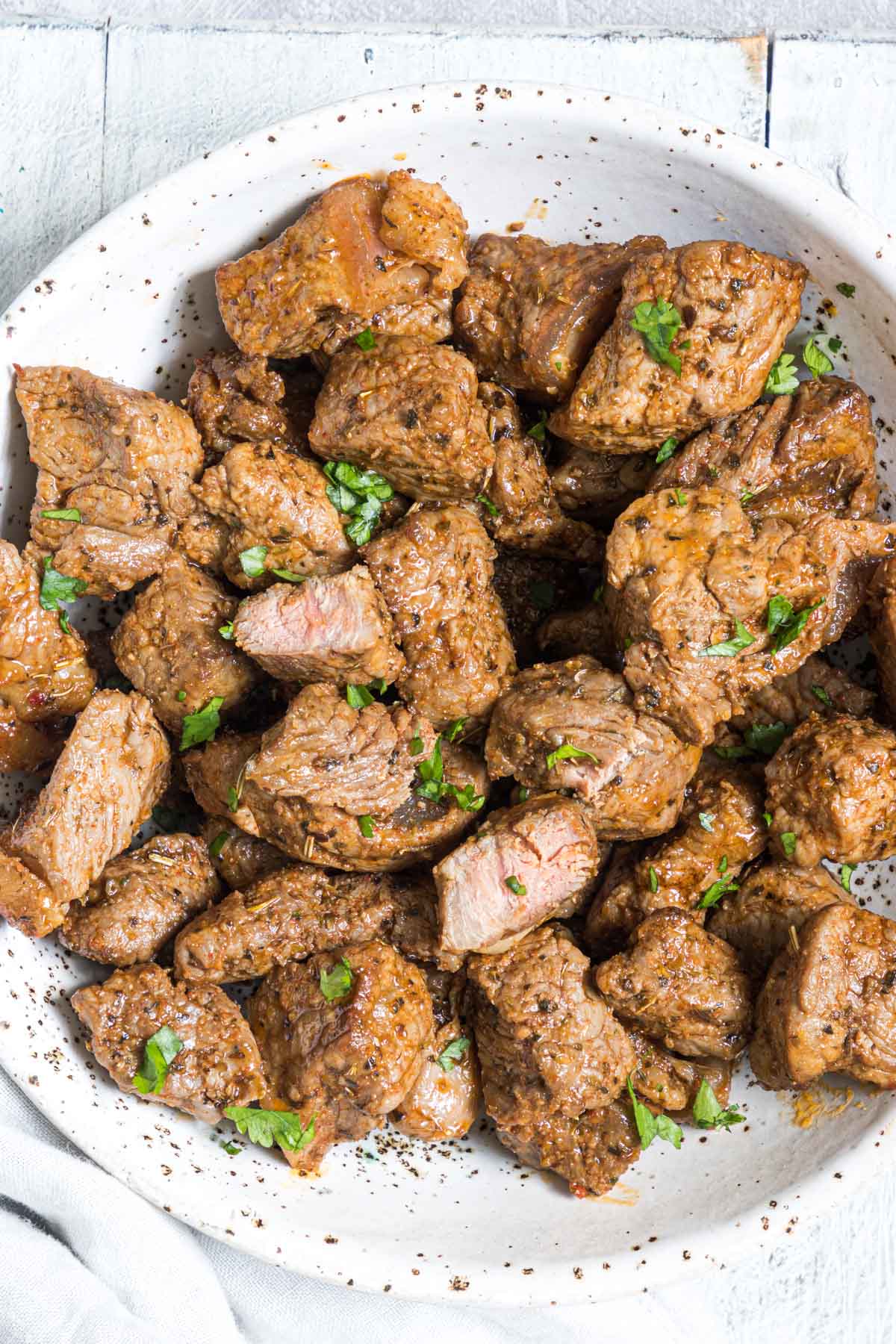

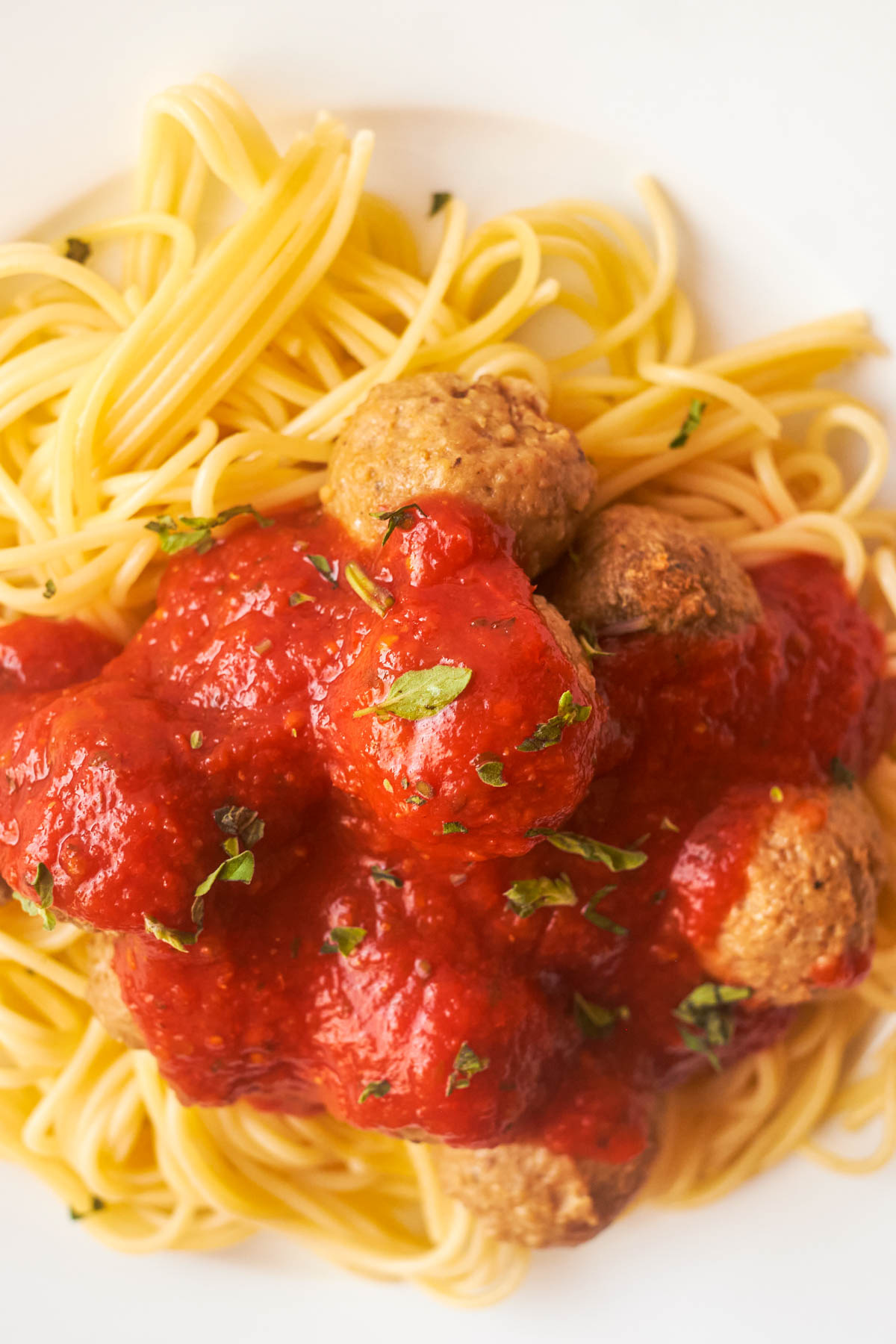



I never knew scalded milk was a thing! I haven’t tried a recipe with it in but then I don’t think I’m very adventurous either. This is really helpful and in depth though, great you can do it in the microwave as well.
Whilst I’ve not tried this recipe, this guide is really handy, I have shared it with my friends who bake regularly as I know they’ll find it useful too!
I’ve never even heard of scalded milk, so this is all brand new information to me. I wonder if it is something that works well with gluten-free flour.
I have never heard of scalded milk before, will have to give it a try
I can remember my Granny showing me how to do this when we would bake on her AGA. Although I have to confess to not recalling which recipes we utilised it in.
I am not a baker at all so this is something completely new to me! I remember when both me and my brother were younger my Mum would heat our milk up in a saucepan in the mornings for our cereal!
I’ve learned something new today! I love cooking, but I hardly ever bake, hence I have never heard of scalding milk before. Thanks! x
I never knew this was a thing you could do with baking to help make certain types of bakes. Sounds pretty easy to do too. Im sure I saw my great grandma doing things like this.
Now I am starting to understand why I can not seem to recreate some of my mum’s bakings that she did because I remember she used to scald her milk too.